Making new dash panels
Posted: Thu Feb 23, 2017 8:01 pm
After much interest and requests, here are the steps taken to make my dash.
Step 1. Sourcing the materials
Not being an expert or ever having veneered timber before, I surfed the net and spoke to many people on what materials I will need. Surprisingly there is heaps of info available on YouTube. This is what I sourced:
Hardwood Plywood with "AA" grade face and back and marine grade bond. Excellent veneer quality makes this easier. Marine bond will not deteriorate due to moisture exposure. Also excellent strength and stiffness.

I used a good PVA based adhesive suitable for general exterior woodworking joinery and other craft uses. It is non-toxic, will not stain the ply/timber.

MDF (thick boards) to sandwich the veneer.
Clamps to compress
Baking paper to ensure veneer does not fix to MDF sandwich boards.
Ordinary paper to absorb any PVA glue
Polyurethane (Motorvehicle) High Gloss Clear
Hole saw bits
Veneer
Process
Measure out the dash pieces. You can use your original panels and cut out using a jigsaw and hole sole drills.
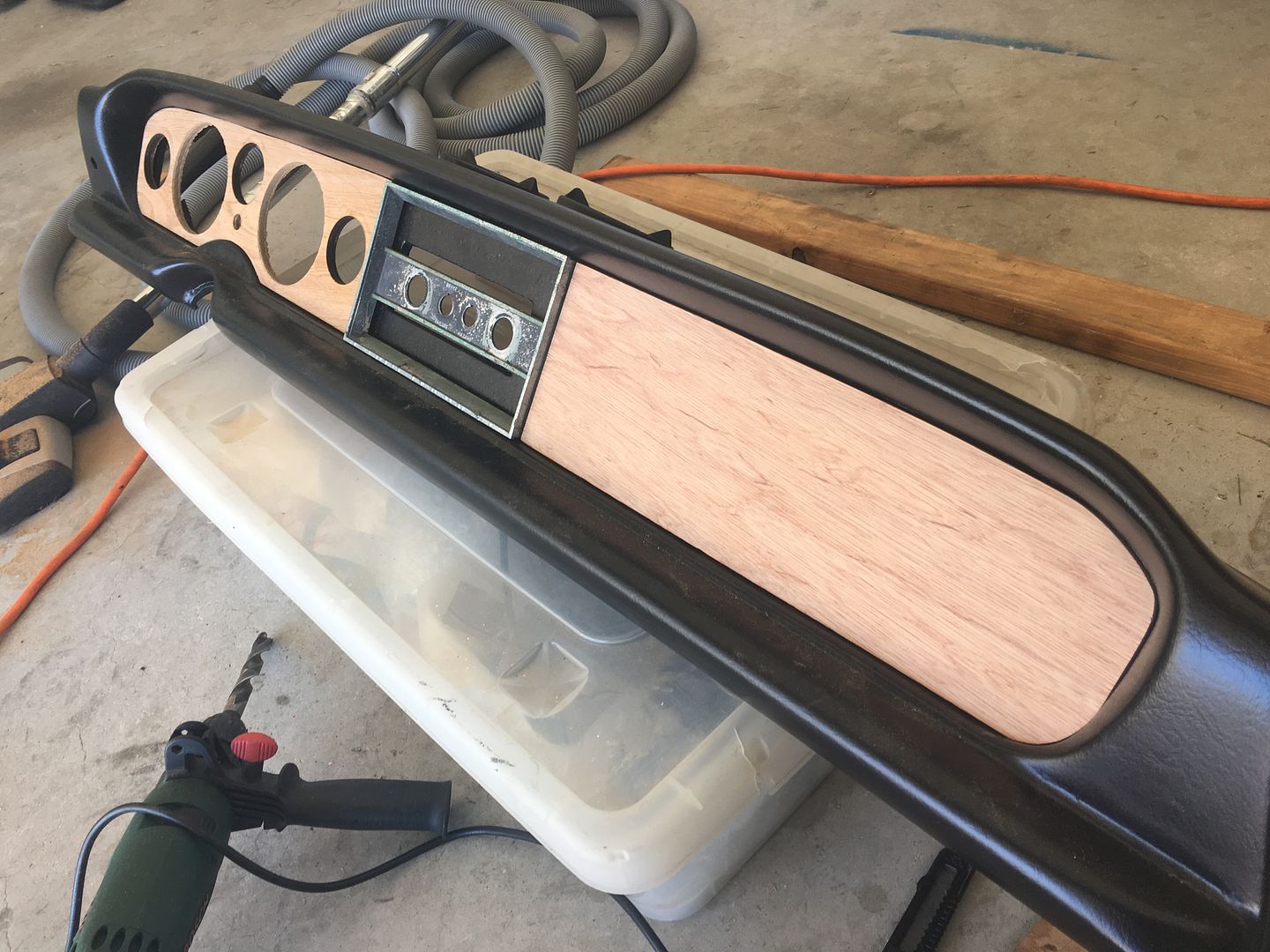
Test Fit all the gauges prior to veneer.
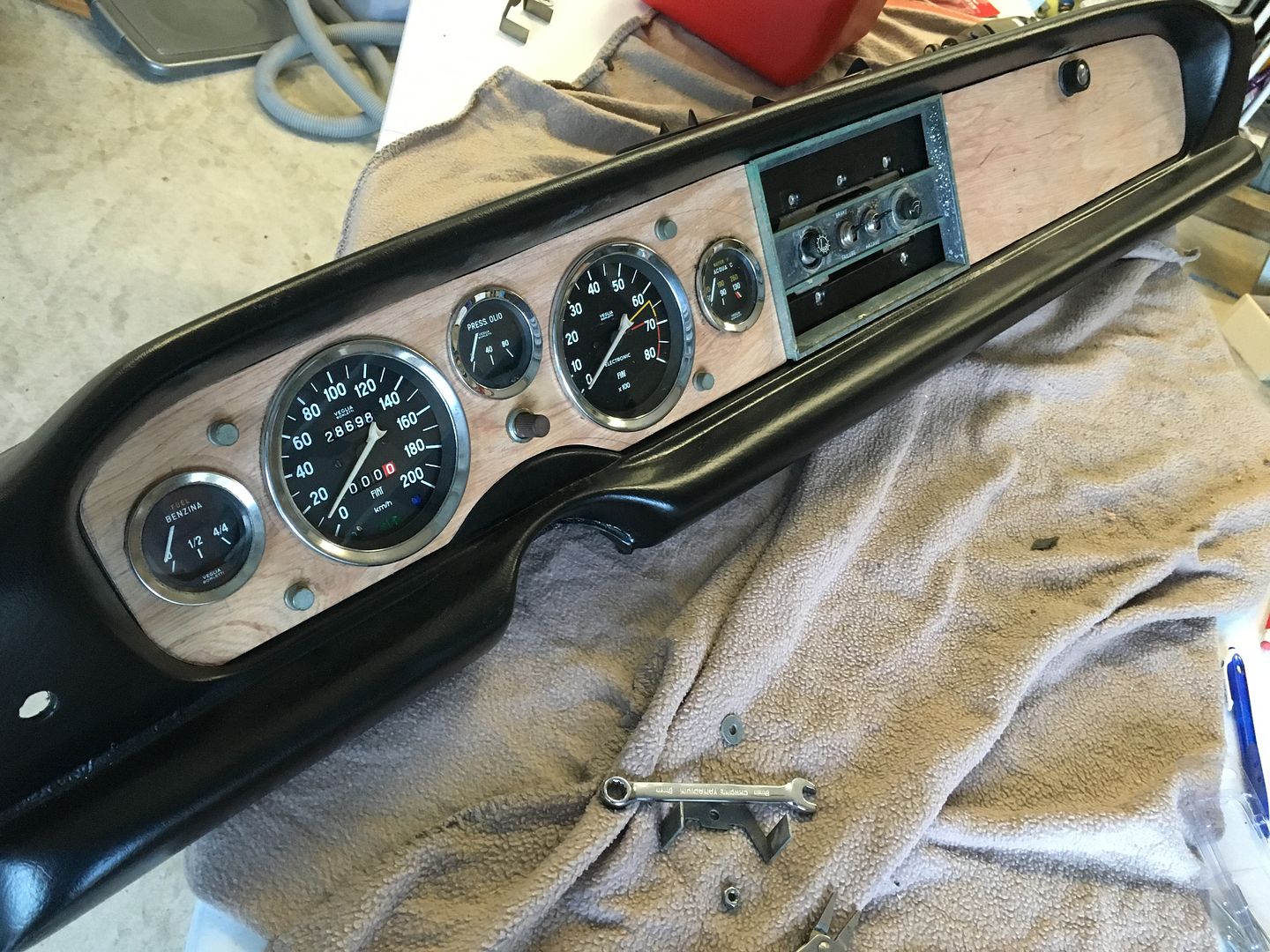
Choose your veneer - I used Blackwood. Don't cut the holes out at this point. Test fit the veneer to ply making sure you have enough to cover area.
Cutting the holes out will be easier after veneer is glued to ply.
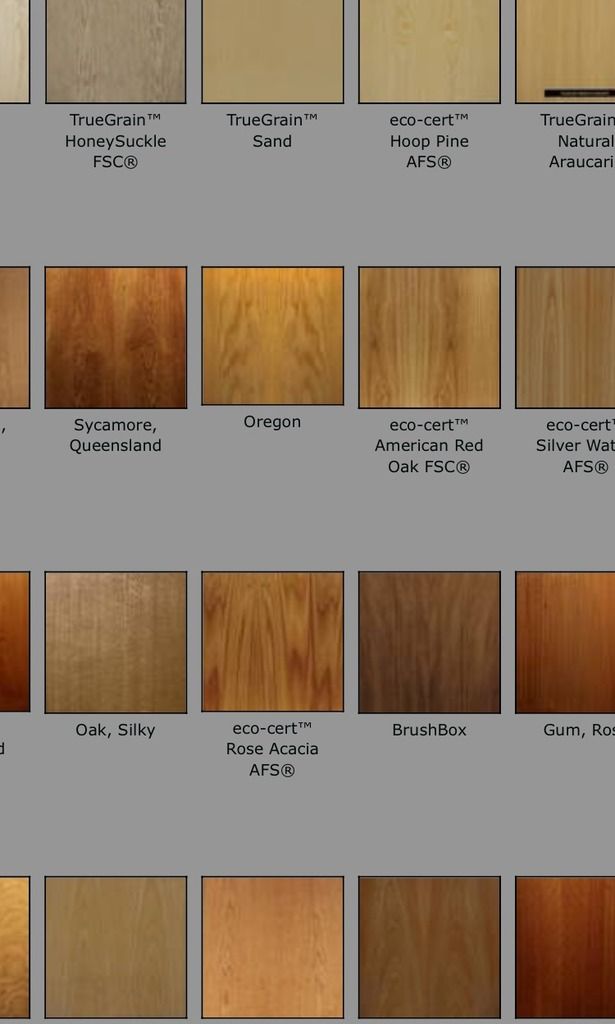
Get your clamps ready and MDF as you don't have a lot of time from applying your glue to clamping.
Place one MDF (compressing board) on a bench, next place a sheet of baking paper on top. Place 1-2 sheets of white paper next.
Sand lightly all the panels and coat side with PVA glue. I used a sponge roller(small) to spread the glue evenly.
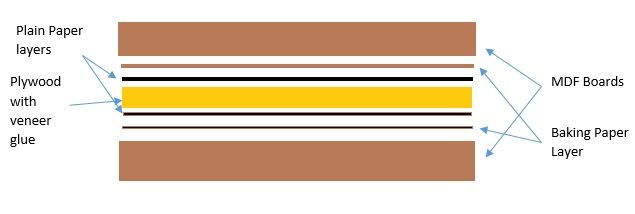
Once glue is on plywood, place your veneer on the ply. Place this on the paper face up and repeat paper sequence, white paper, baking paper then MDF. Hold tightly and place clamps evenly on each corner and compress.
Not my work below as I did not take photos. Similar clamps and process adopted like below:

Next- leave for at least 24 hours.
Cut out your gauge holes using a sharp Stanley blade.
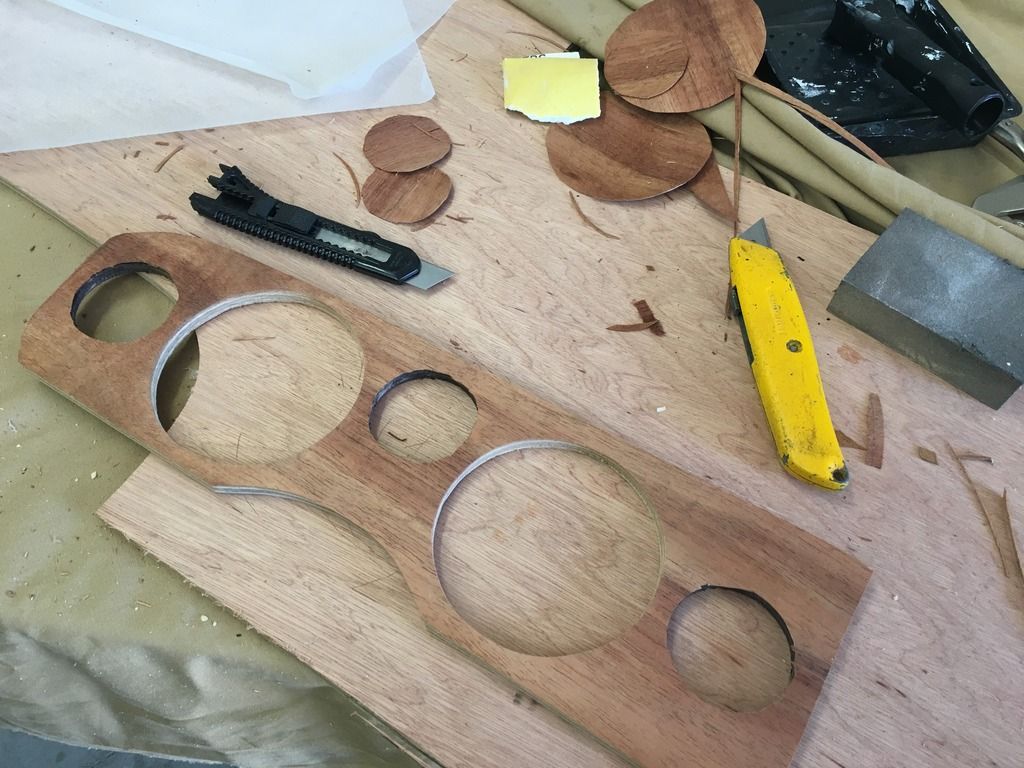
Sand your veneer lightly.
Now you have options for clear. You can either approach a motor vehicle paint shop to clear for you, or clear yourself. Typical sanding between coats with very fine sand paper.
Note, I had my painter clear the panels as I think a professional will alway give you a better result.
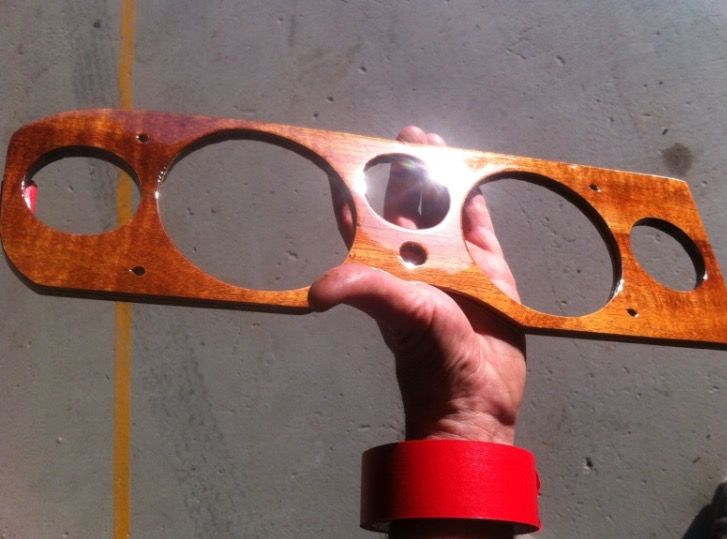
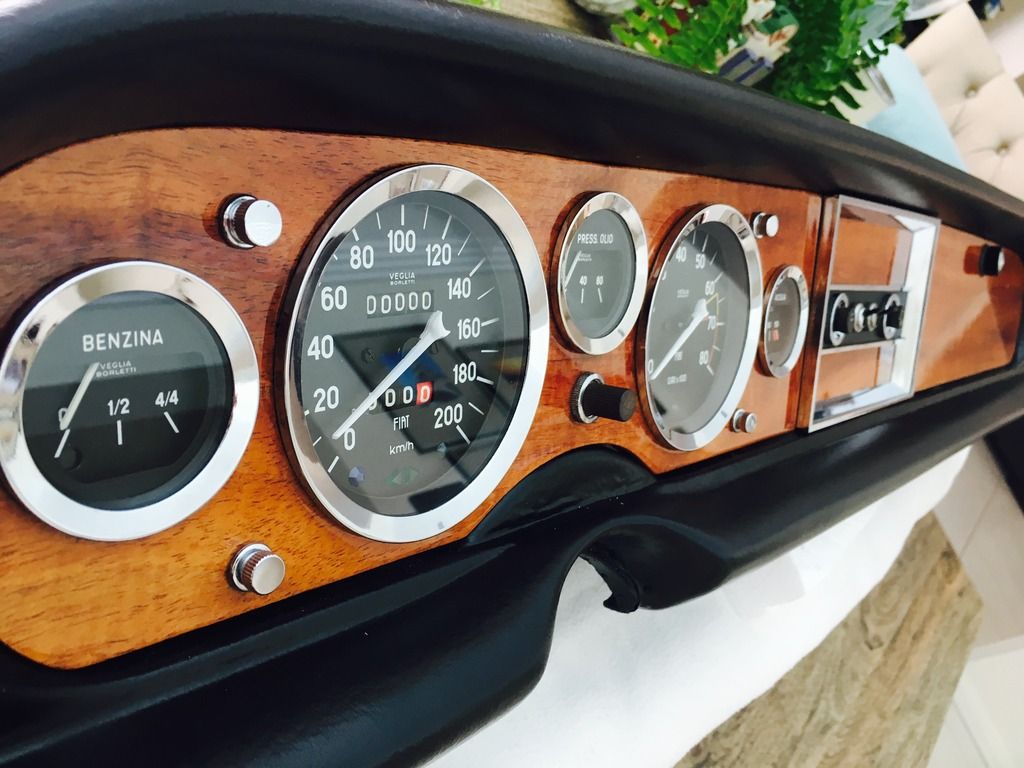
Step 1. Sourcing the materials
Not being an expert or ever having veneered timber before, I surfed the net and spoke to many people on what materials I will need. Surprisingly there is heaps of info available on YouTube. This is what I sourced:
Hardwood Plywood with "AA" grade face and back and marine grade bond. Excellent veneer quality makes this easier. Marine bond will not deteriorate due to moisture exposure. Also excellent strength and stiffness.

I used a good PVA based adhesive suitable for general exterior woodworking joinery and other craft uses. It is non-toxic, will not stain the ply/timber.

MDF (thick boards) to sandwich the veneer.
Clamps to compress
Baking paper to ensure veneer does not fix to MDF sandwich boards.
Ordinary paper to absorb any PVA glue
Polyurethane (Motorvehicle) High Gloss Clear
Hole saw bits
Veneer
Process
Measure out the dash pieces. You can use your original panels and cut out using a jigsaw and hole sole drills.

Test Fit all the gauges prior to veneer.

Choose your veneer - I used Blackwood. Don't cut the holes out at this point. Test fit the veneer to ply making sure you have enough to cover area.
Cutting the holes out will be easier after veneer is glued to ply.

Get your clamps ready and MDF as you don't have a lot of time from applying your glue to clamping.
Place one MDF (compressing board) on a bench, next place a sheet of baking paper on top. Place 1-2 sheets of white paper next.
Sand lightly all the panels and coat side with PVA glue. I used a sponge roller(small) to spread the glue evenly.

Once glue is on plywood, place your veneer on the ply. Place this on the paper face up and repeat paper sequence, white paper, baking paper then MDF. Hold tightly and place clamps evenly on each corner and compress.
Not my work below as I did not take photos. Similar clamps and process adopted like below:

Next- leave for at least 24 hours.
Cut out your gauge holes using a sharp Stanley blade.

Sand your veneer lightly.
Now you have options for clear. You can either approach a motor vehicle paint shop to clear for you, or clear yourself. Typical sanding between coats with very fine sand paper.
Note, I had my painter clear the panels as I think a professional will alway give you a better result.

